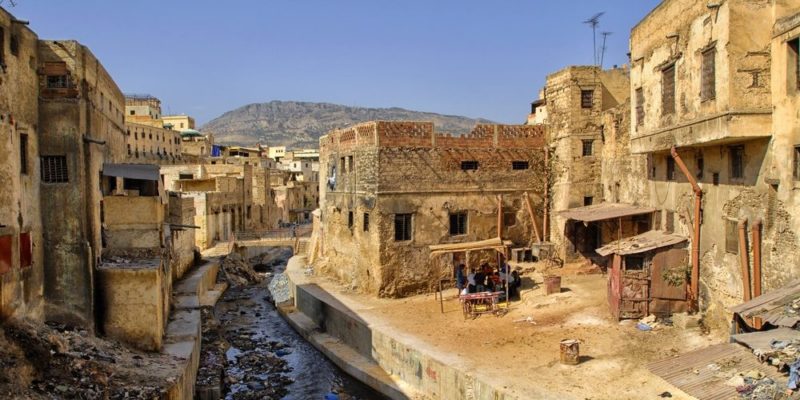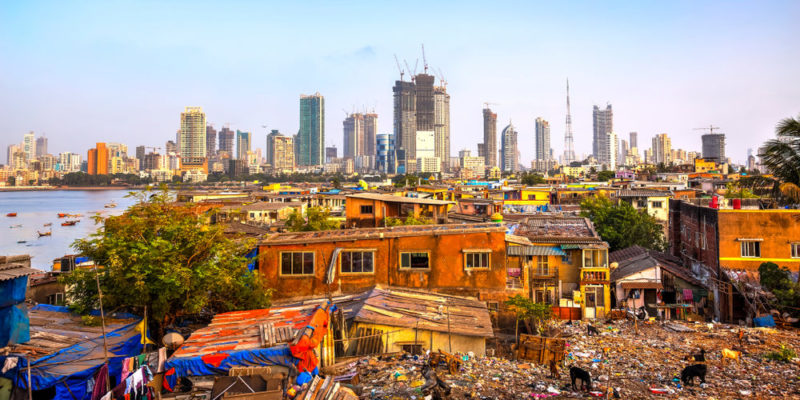We explain what underdevelopment is and what its causes and consequences are. In addition, its characteristics and possible solutions.
What is Underdevelopment?
Underdevelopment is a qualification of nations that refers to the lack of goods , services and productive mechanisms to generate their own wealth in a sustainable way. In general, it is used more or less synonymous with poverty , although it implies a series of shortages much greater than material wealth alone, such as quality of life , social equality or financial independence.
There are no agreements regarding the scale used to distinguish developed countries from " underdeveloped " or " developing " countries, but the term implies a kind of backwardness in the social, political and economic construction that translates into a series of weaknesses and negative consequences for the country.
Nor is there an agreement regarding viable options and solutions to lift a nation out of underdevelopment. There are, however, numerous theories regarding the possible causes of this phenomenon that affects most of the world.
Definition of underdevelopment
The definition of underdevelopment is problematic, although it seems to be well understood in practice . The dictionary of the Royal Spanish Academy defines it as a "backwardness of a country or region, which would not have reached certain levels (socioeconomic, cultural)". The complicated thing is, of course, in defining what those certain levels are.
The underdeveloped nations are those unable to provide in a sustained manner a state of socio-economic and cultural well-being to their inhabitants, which allows them to interact in a sovereign and independent condition with the rest of the world.
The three worlds

Another way of understanding underdevelopment is that proposed by Peter Wosley in the 60s, relying on the three states of the French Revolution .
Thus, there would be a First World, more clearly developed and independent , located in Western Europe and the United States; a second developing world , which would be the countries of the Eastern bloc; and a third world , represented by Africa , Latin America and Southeast Asia that presents various forms of retardation in its own growth as a region.
Characteristics of underdevelopment

Underdeveloped countries present some or all of the following characteristics, depending on their degree of “backwardness”:
- Economy based on the primary sector. Producers and exporters of raw materials , but importers of processed materials or finished goods.
- Unfavorable foreign trade regimes. The exchange with other countries is carried out from positions of inferiority and dependence, not as equals. This translates into other forms (military, political) of dependency.
- High mortality rates. Both child (a main indicator), and adult, product of urban violence, high crime margins or social lack of control.
- Overpopulation. Especially in the lower strata of society , which leads to notorious social and existential inequalities.
- Low educational level. Which has repercussions in weaker democracies , manipulable peoples and primitive social reasoning.
- High and unequal unemployment. This often translates into precarious jobs, low pay, low class mobility, and thus poverty.
- Weak democracies. Usually due to institutional lack, corruption, anarchy, impunity and other failures in the social pact of organized coexistence.
Underdevelopment indices
Institutions such as the World Bank use the Gross Domestic Product (GDP) in their regional study rates as one of the main indicators of the development margin of nations.
Others, like the UN , combine it with other measurements to achieve a Human Development Index , such as literacy level, average longevity, kilowatts of energy used per person, and access to telecommunications technologies .
Causes of underdevelopment

For a long time, racial and religious criteria were accused as a cause of underdevelopment , which justified racist and xenophobic ideologies that are still not overcome today. Fortunately, there are enough examples of successful and racially distinct nations from Caucasian Europe, or with religions other than Christian Protestantism, to deny such reasoning.
Other possible causes pointed to the climate , accusing climate-benign tropical countries of lacking an environmental incentive for effort, thus leading more comfortable and less ambitious lives . At the same time, the harsh climate of some countries would deny them the minimum conditions to establish productive agriculture or exploit some marketable resource.
More historically documented criteria tend to blame European and North American colonialism for keeping weaker nations in a convenient state of backwardness . The former African, Asian or Latin American colonies, after achieving their independence (or being abandoned to it), must today compete in conditions of extreme inequality with their former oppressors, while they took advantage of the plundered wealth to strengthen themselves.
Consequences of underdevelopment

The consequences of underdevelopment are clear and difficult to control, since they tend to reproduce the pattern of deficiencies that produced them, such as poverty, dependence on foreigners, social inequality , political instability, democratic fragility, demagogy and, in the most serious cases, misery, famine, pandemic and extreme violence.
Possible solutions for underdevelopment
There are many theories of overcoming underdevelopment. Some emphasize the historical reparation that developed nations owe to their former oppressed; Others prefer to place responsibility on themselves and on overcoming certain cultural schemes that represent an obstacle to growth , or in regional integration between underdeveloped countries and exchange between peers, turning their backs on the large economies and their interventionist aspirations.
The latter motivated numerous political initiatives for integration and the common market in the last decades of history.
Underdeveloped regions

The following regions are traditionally considered underdeveloped or developing:
- Central Africa. With enormous margins of poverty, violence, and political instability often leading to civil wars and / or dictatorships , it is the continent with the worst outlook.
- India and South Asia. Very unequal caste societies, such as that of India, present both great technological stakes and huge human contingents in misery.
- Southeast Asia. The archipelagos and island nations dependent on tourism often have fragile and dependent economies, there are even countries wholly supervised by the US in the region.
- Central America and the Caribbean . Political instability, extremely high crime rates and poor educational development signify many countries in the region.
- South America . With the exception of Bolivia and Paraguay, which are notoriously behind their neighbors, the region remains developing despite significant margins of poverty and violence.
- Eastern Europe. In a situation similar to that of Latin America, they oscillate between periods of stability and medium development, and dramatic political and economic setbacks.
- Western Europe. The second place in quality of life in the world, despite the fact that they face economic problems that however do not deteriorate their quality of life too much.
- United States, Japan , Canada, Australia . The most technologically, industrially and economically developed countries, with minimal poverty margins.
The "underdeveloped mentality"

This term is often used for areas other than economic or political, being synonymous with a model of thought that waits for the solutions to its problems to fall from the sky , that is, they are provided by entities other than itself.
Alternatives for underdevelopment
Many sectors critical to the division of the world between developed and underdeveloped prefer the dependent-independent duo, in order to reflect that what is truly harmful is the inability to manage needs on their own , and not reaching a kind of goal established by the way in which live the most powerful foreign nations.
The above content published at Collaborative Research Group is for informational and educational purposes only and has been developed by referring reliable sources and recommendations from technology experts. We do not have any contact with official entities nor do we intend to replace the information that they emit.
Abubakr Conner brings a diverse skill set to our team, and covers everything from analysis to the culture of food and drink. He Believes: "Education is the most powerful weapon that exists to change the world." .
Leave a reply
Your email address will not be published. Required fields are marked *Recent post

Sport: What Is It, Types, Risks, Features, Characteristics and Examples

Dogs: Emergence, Features, Characteristics, Feeding and Breeds

Story: Definition, Elements, Structure, Features and Characteristics

